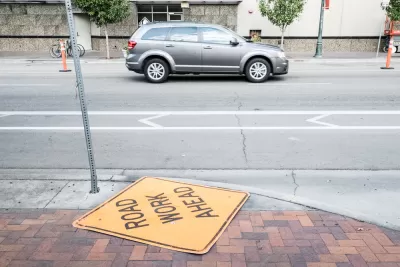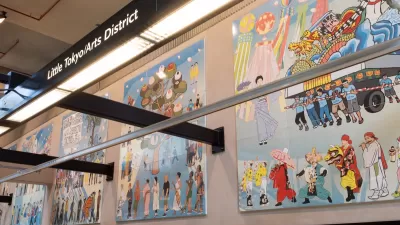Idaho state law prevents local voters from implementing the sales taxes that generate revenue to match federal funding for transportation projects, taking local and regional projects out of the running for many federal grant programs.

Kevin Fixler reports on a dilemma facing transportation planners in Idaho as Congress considers the Infrastructure Investment and Jobs act.
If the funding package passes and becomes law, it would guarantee Idaho billions of dollars over the next five years toward roads, bridges and other major infrastructure projects. Tens of millions of dollars for expansions of the state’s broadband internet and electric vehicle charging networks are also part of the hefty package, as is almost $200 million toward public transit improvements, according to a White House fact sheet.
Fixler notes that the earmarking process has already aquired funding for a host of projects around the state, including the Treasure Valley improvement project, which "imagines installing passenger shelters and bus pullouts, as well as real-time electronic route information at stops, to help build upon Valley Regional Transit’s ridership."
However, another list of projects that could potentially be funded by the federal infrastructure bill is off the table, due to a state law that prohibits local voters from implementing local sales taxes to to fund services, including transportation.
Matt Stoll, executive director of COMPASS, the region’s transportation planning agency, said this factor is the primary reason why expansions of the Treasure Valley’s public transit network remain stuck in neutral. The statewide shortcoming also prevents agencies such as VRT from applying for grants and other competitive pots of federal money to support the system, because the agency does not have the matching funds — from 20% up to 50% of the award — it needs to qualify.
The article includes more details on the state of transportation funding in a state that grew by 17 percent in the past decade, according to 2020 Census data.
FULL STORY: Idaho law limits how infrastructure bill can aid transit, leaves future riders waiting

Planetizen Federal Action Tracker
A weekly monitor of how Trump’s orders and actions are impacting planners and planning in America.

Congressman Proposes Bill to Rename DC Metro “Trump Train”
The Make Autorail Great Again Act would withhold federal funding to the system until the Washington Metropolitan Area Transit Authority (WMATA), rebrands as the Washington Metropolitan Authority for Greater Access (WMAGA).

DARTSpace Platform Streamlines Dallas TOD Application Process
The Dallas transit agency hopes a shorter permitting timeline will boost transit-oriented development around rail stations.

Five Key Transportation Funding Proposals in Trump’s Budget
The President’s proposed 2026 budget would keep spending roughly the same for transit and rail and eliminate over $5 billion in funding for EV charging infrastructure.

LA County Creating Action Plan to Tackle Extreme Heat
Los Angeles County is creating a Heat Action Plan to help communities stay safe during extreme heat, with steps like adding more shade, improving buildings, and supporting the neighborhoods most at risk.

Maryland Plans Quick-Build Complete Streets Projects
The state will use low-cost interventions to improve road safety in five Maryland counties.
Urban Design for Planners 1: Software Tools
This six-course series explores essential urban design concepts using open source software and equips planners with the tools they need to participate fully in the urban design process.
Planning for Universal Design
Learn the tools for implementing Universal Design in planning regulations.
City of Charlotte
Municipality of Princeton
Roanoke Valley-Alleghany Regional Commission
City of Camden Redevelopment Agency
City of Astoria
Transportation Research & Education Center (TREC) at Portland State University
US High Speed Rail Association
City of Camden Redevelopment Agency
Municipality of Princeton (NJ)





























